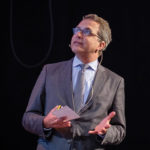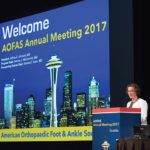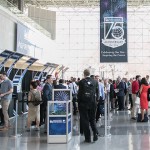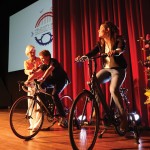
CHALLENGES
This year, 5,138 people attended the meeting, down from 8,010 the year prior in San Francisco. Trina Armstrong, ASCB’s director of meetings, had been anticipating an 8-percent drop in attendance from 2012, when ASCB met in San Francisco — a particularly strong city for life sciences. “It was a disappointment to not get the number of attendees that we were hoping for, but overall the meeting was fabulous,” Armstrong said. “Those that were there absolutely loved it.”
ASCB 2013 had a total of 341 booth spaces, down from 387 in San Francisco — but leaving the organization enthusiastic about ASCB 2014. “Next year, in Philadelphia, we are going to have a more interactive floor plan in the exhibit hall,” Armstrong said, “which will no longer be called the exhibit hall — it will be the ASCB Learning Center.” For the first time ever, ASCB will provide a three-hour period each day, from noon to 3 p.m., during which there will be no programming outside the Learning Center — which will feature exhibitor demos and roundtable discussions. “It’s a way to show our appreciation to our exhibitors,” Armstrong said, “and to bring them the audience that they are there to see.”
INITIATIVES
This year was the first that ASCB had e-poster sessions: three- to four-minute, video-monitor-assisted presentations, followed by a minute or two of questions, for a total of five minutes per poster. The e-poster talks were based around specific topics each day, and interested attendees could submit their proposals through ASCB’s abstract-submission process. “This was another way for our attendees to give a talk at a scientific meeting,” Armstrong said. “It helps develop their CVs, and it gives them practice to give a talk in front of a small group of people.”
ASCB also donated 10 iPads and CellScopes — highres microscope optics for use with the tablet computers — to two schools in New Orleans. “Their students came and they picked up the CellScopes, and they were thrilled,” Armstrong said. “This was just a way to give back, for the ASCB to leave something behind to generate an interest in the science.”
Schoolchildren weren’t the only ones who got extra attention from ASCB. The organization had two special programs for graduate students and post-docs on how to deliver a stronger PowerPoint presentation, by former producers of “Good Morning America,” and a session on how to deliver a “killer elevator speech.” Both proved popular not only with their target audience, but with meeting attendees from all stages in their careers.
Convene’s Pre-Con/Post-Con series asks meeting planners about their challenges and how they intend to address them (Pre-Con), and then circles back around after the meeting has occurred (Post-Con) to see how well they worked out.



